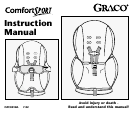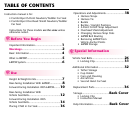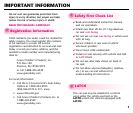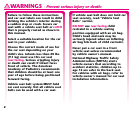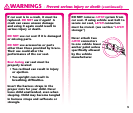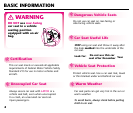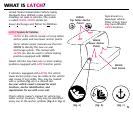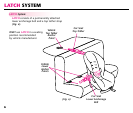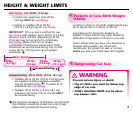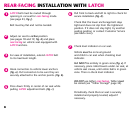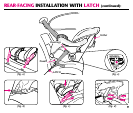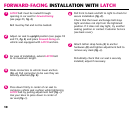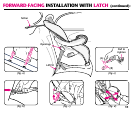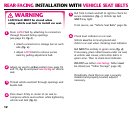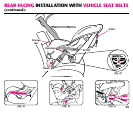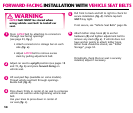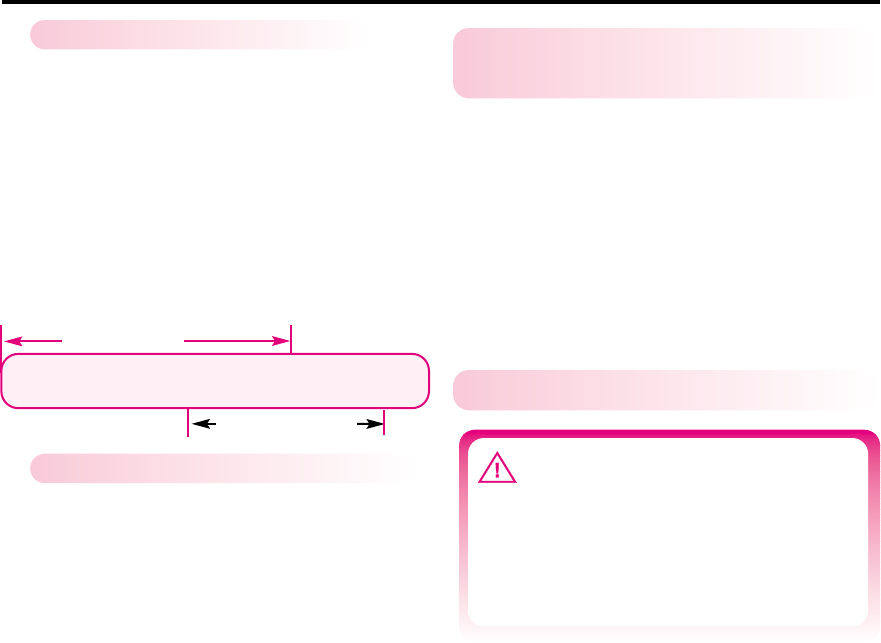
HEIGHT & WEIGHT LIMITS
A preterm infant or low birth weight infant may
be at special risk in a vehicle or aircraft.
According to the American Academy of
Pediatrics, these infants may suffer breathing
difficulties if improperly reclined in a car seat.
Graco advises that you have your physician or
hospital staff evaluate your infant and
recommend the proper car seat or car bed
before you and your infant leave the hospital.
7
❃
Preterm or Low Birth Weight
Infants
❃
Outgrowing Car Seat
Prevent serious injury or death:
• Top of child’s ears must be below top
edge of car seat.
• Child’s shoulders MUST not be above
top harness slots.
WARNING
Rear-facing: 5 to 30 lbs. (13.6 kg)
• Infants who weigh less than 20 lbs.
(9.0 kg) MUST be rear-facing.
• Infants or toddlers 20 to 30 lbs.
(9.0 to 13.6 kg) may be rear-facing.
Forward-facing: 20 to 40 lbs. (9.0 to 18.1 kg)
• Toddlers 20 to 30 lbs. (9.0 to 13.6 kg) who
are capable of sitting upright unassisted
may be forward-facing
*
. If unable to sit
unassisted, use rear-facing.
• Toddlers 30 to 40 lbs. (13.6 to 18.1 kg)
and up to 40 inches (101.6 cm) tall MUST
be forward-facing.
IMPORTANT: This car seat is certified for use
rear-facing with children up to 30 lbs. (13.6 kg).
However, some children approaching 30 lbs.
(13.6 kg) may be too tall to fit comfortably
rear-facing. When child can no longer
comfortably fit and knees remain bent, child
should use car seat forward-facing only if child
is over 20 lbs. (9.0 kg) and can sit upright
unassisted.
*
*
The American Academy of Pediatrics recommends
that children should be at least one year of age
before being positioned forward facing.
Forward-facing
Rear-facing
40 lbs.
(18.1 kg)
5 lbs.
(2.2 kg)
30 lbs.
(13.6 kg)
20 lbs.
(9.0 kg)



